Urboteca Fellowship: A successful collaboration emphasizing participatory processes
An essential part of this participatory journey was shaped within the Urboteca Fellowship 2024, coordinated by ATU – Asociația pentru Tranziție Urbană, a program designed as a research-action experiment (Living Lab) under the CoNECT project. Conceived as a platform to train facilitators for participatory diagnostics, the Fellowship brought together young professionals across disciplines — architecture, urbanism, anthropology, and visual arts — to work in interdisciplinary teams on real urban case studies. One of these was Victoria Depot, hosted by the Intercommunity Development Association of the Bucharest Metropolitan Area (ADIZMB), which also acted as a core partner in the broader URBACT testing phase.
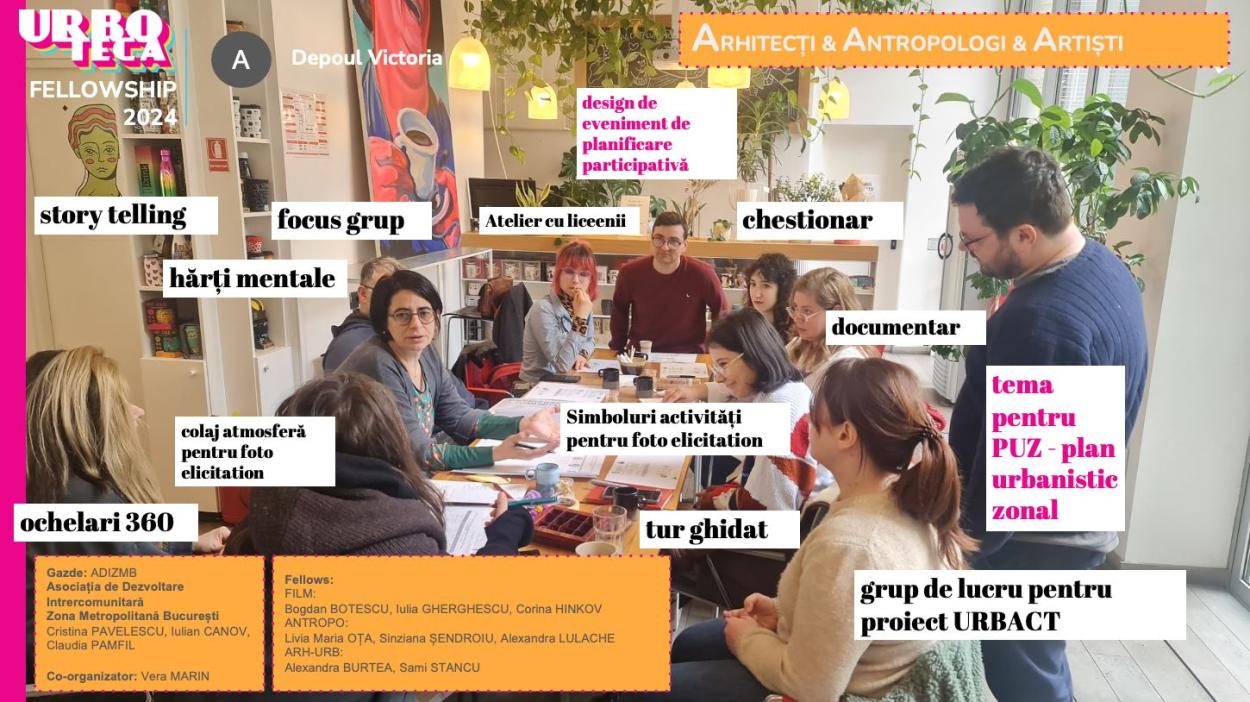
Project meeting for Urboteca Fellowship. Image source: Urboteca group
Through months of coordinated fieldwork, interviews, archival research, and visual documentation, the Victoria Depot fellowship team helped lay the groundwork for a public consultation process grounded in empathy, diversity, and shared urban narratives. Their collaborative output included an actor analysis report, a compelling ethnographic video and a first draft of a public questionnaire, designed to gather input for the site's Urban Zoning Plan (PUZ). This preparatory work ensured that the survey was not simply a box-ticking exercise but the continuation of a living conversation between institutions, experts, and the people of Bucharest.
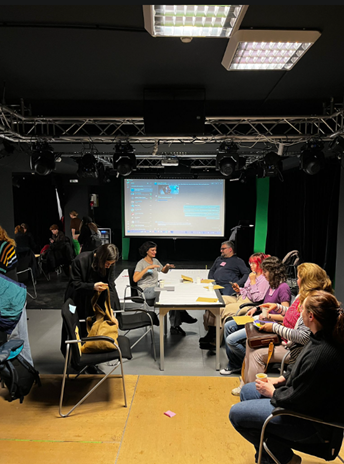
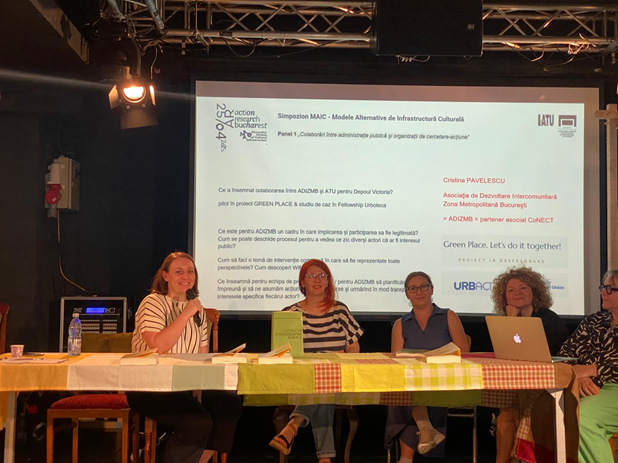
First and final meetings in the Urboteca Fellowship project. Photo source: Andreea Voineag
Listening First: A City-Wide Call for Ideas
As part of the URBACT testing phase, the Bucharest team embarked on an ambitious mission: to reimagine Victoria Depot through a participatory process that would amplify the voices of residents, urban professionals, institutions, and civil society. The depot’s transformation into a community-centered space would no longer be a top-down decision—it would be co-created.
Between October 2024 and May 2025, a collaborative process unfolded, engaging stakeholders across disciplines and sectors. At the heart of it stood a public survey, co-designed by ADIZMB (the Intercommunity Development Association of the Bucharest Metropolitan Area) in partnership with the URBACT Local Group, ATU (Asociația Pentru Tranziție Urbană), the Urboteca Fellowship, the Chamber of Architects, and local experts.
The questionnaire combined quantitative and qualitative elements, inviting citizens not only to choose among options but also to describe their visions, emotions, and ideal days spent in a revitalized depot. Visual collages of imagined ambiances sparked responses grounded in atmosphere and affect—not just functionality.
The response exceeded expectations: 658 completed surveys were collected, with a rich mix of demographics and professional backgrounds. This strong turnout challenged a common assumption in Bucharest’s planning culture—that public consultation is met with apathy. On the contrary, residents proved they are deeply invested in the shaping of their urban environment—if given the tools and respect to participate.
Urban Imagination, Rooted in Memory
The survey revealed a remarkable consensus on the depot’s potential:
- A museum of transport emerged as the most desired function, honoring the site’s legacy.
- Citizens envisioned green spaces, cafés, community gardens, and performance areas where people could gather, learn, relax, and create.
- A shared emphasis was placed on accessibility, walkability, and sustainability—with strong support for soft mobility infrastructure, water features, and ecological regeneration.
A word cloud analysis showed dominant terms such as “muzeu,” “relaxare,” “aer liber,” “copii,” “cultură,” and “transport public.” These were more than buzzwords—they represented a collective longing for a public space that blends memory with vibrancy, history with hospitality.
Respondents also strongly rejected rigid or sterile redevelopment schemes. In a ranking of visual collages, the most appreciated image depicted a depot overtaken by lush vegetation and community life, while the least favored featured bare concrete and minimal greenery.
A Snowball Effect of Civic Energy
The testing action didn’t end with the survey. Its ripple effects were wide and powerful:
- Media coverage exploded, with over 17 press articles, TV news segments (including one on PRO TV’s prime-time bulletin), and five social media campaigns across Facebook, Instagram, X, and LinkedIn.

News report on prime time about the depot. Source
- Two blog posts and a wave of citizen commentary broadened the discourse.
- A petition to relocate the depot entirely to allow for new civic uses was started.
- The Chamber of Architects and City Hall held meetings to discuss the integration of the survey’s findings into the PUZ (Urban Zoning Plan) and into the terms of the future competition for redeveloping the site.
The process became a real-time demonstration of how participatory governance can energize communities, align divergent interests, and inform professional planning.
Sharing the Model: From Local Success to European Inspiration
Recognizing the replicability of the process, the Bucharest team shared its approach and lessons learned by giving presentations on the GreenPlace. Let’s do it together! project in three strategic initiatives:
- An Interreg IMPETUS event where European experts exchanged ideas on civic-driven regeneration.
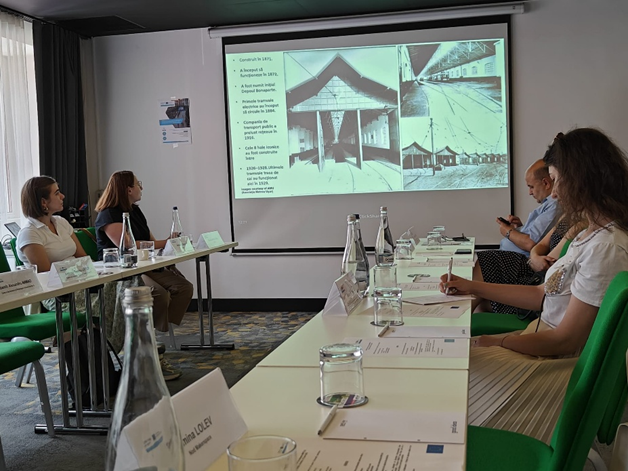
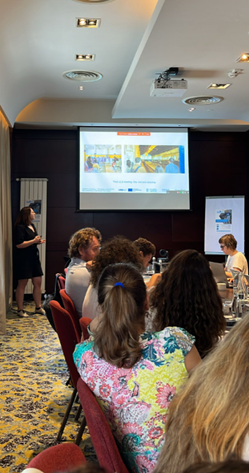
Presentations about the depot during a project meeting for Interreg IMPETUS project. Photo Source: Vera Marin
- A presentation at the University of Architecture, showcasing the project as a model of inclusive participatory planning.
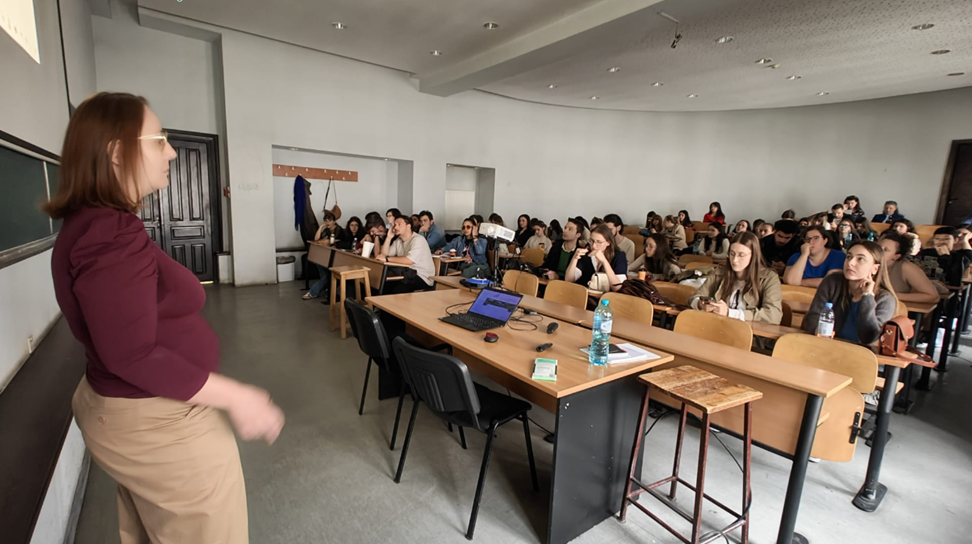
Presentation about Victoria depot and the collaboration with the Urboteca. Photo source: Vera Marin
- A workshop on urban governance and creative ecosystems hosted at Nod Makerspace, where policy-makers, artists, and urbanists explored new collaborative models.
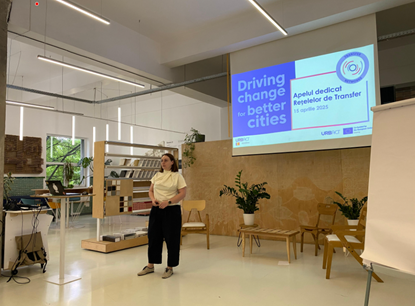
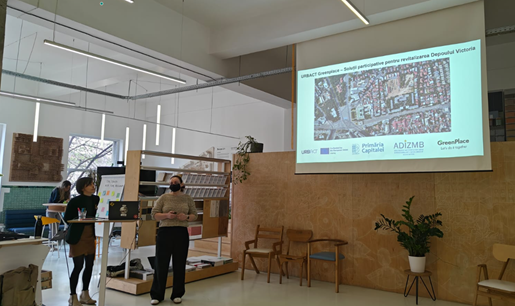
Presentations about the depot during workshop within the project "Building Sustainable Urban Creative Cultural Ecosystems" (CECCUD), coordinated by Nod Makerspace. Photo Source: Vera Marin
A New Standard for Participation
The Bucharest case challenges a deep-rooted urban paradigm. In a city where public consultation is often seen as symbolic or inefficient, the GreenPlace testing action showed that when properly designed, communicated, and resourced, participatory tools can yield powerful, actionable insights.
By including over 50 stakeholders, gathering hundreds of detailed responses, and triggering civic debate, the action helped shift the perception of what public involvement looks like. It transformed public engagement from a procedural formality into a meaningful, collaborative process.
Moreover, it influenced the very fabric of the Integrated Action Plan (IAP)—embedding phases of consultation, cross-sector dialogue, transparent decision-making, and design competitions rooted in community feedback.
ULG meeting discussing the outcomes of the survey. Photo source: Iulian Canov
What Lies Ahead
The future of Victoria Depot is not yet decided. But one thing is certain: its fate will no longer be written behind closed doors.
As plans evolve, the survey results and the collective imagination of Bucharest’s citizens stand as a democratic blueprint for what the depot site can become: not just a museum, not just a park—but a shared place of memory, creativity, nature, and life.
Article written by Cristina Pavelescu & Iulian Canov on 05/08/2025

